|
The Swing By Gerald - Lag By Gerald Haynes ROK Golf - Director of Instruction Introduction: In this installment of the Swing By Gerald we will be covering Lag. Some of you might be wondering what is Lag, others might know what it is, but have no idea how to achieve it. I would say, read my first 3 blog posts first - then come back to this one. Without understanding what to do before you start the downswing it is very difficult to even think about creating any lag. Lag is the angle created between the arms and club on the downswing, and it is essential in creating distance, no angle = no distance. If there was a secret to Hogan's swing it was Lag, he created more Lag than any player of his era and maybe the most of all time, which is why he was such a dominant force in golf even though he could barely walk 18 holes. How To Create Lag: Most modern players have a good amount of lag, the only player that really comes close to Hogan is Sergio, and that's probably why he has been the best ball striker on tour almost 20 years now. If you watch Sergio's swing you can see at the top of his swing he does not have a tremendous amount of hinge, but as soon as he starts his downswing he goes from 90 degrees to 150 degrees of hinge very quickly. The key is not actually trying to create lag, but letting it happen. Your hands need to be inactive enough during the backswing and the downswing, that gravity and change of direction allow the lag to be created. We see all kinds of drill that have you pre-hinge, and try to keep that angle both back and through. I have found after numerous attempts to teach it, that method does not actually work, all it does is create tension and kill any lag you could achieve. The best way to learn it is with a heavy club, turn back with no hinge and really relaxed hands, then start you downswing and allow the club to hinge as you turn through. The heavy club will help your hands understand the lag and feel the club stay behind as you turn through. The following video is a good drill to practice with a heavy club, exaggerating the softness in your hands, the turn through, and leaving the club behind. Why? There are several reasons to create the Lag, the biggest one is distance, but when you have Lag you also have a lot more consistency. The reason there is more distance and consistency is because Lag helps flex the shaft of the club properly, which in turn helps it release properly. When you watch the pros, they hit is so clean all the time because there shaft is releasing at the moment of impact, so they are at max speed at impact. Most amateurs release the club from the top of their swing, their club is actually slowing down at impact. Another big piece of the Lag, flexing of the club and release point is loft, I won't get into Dynamic Loft and Spin Loft yet, but loft is taken off or normalized when there is Lag. Most amateurs add loft to their clubs: Example - if your 7 iron is measured at 34 degrees of loft and you add loft at the bottom by not having lag, your 7 iron hits the ball at 40+ degrees of loft, essentially making it a 9 iron. A Tour Player will take that same 34 degrees and make it 28 degrees at impact, in essence hitting the ball 36+ yards further than an amateur without changing speed. Do's and Don'ts! Do Not's:
The first video is the do not swing, and the second will be the do swing. Conclusion Lag is an integral piece to help you create both distance and consistency. Learn how to take the control away from your hands and trust that momentum and gravity will help you control the golf ball better than your hands. Stay relaxed with your hands and let the club follow your body, both back and through impact. Your hands can take over once you feel the club catch on the way down, preferably after your hands pass the ball.
1 Comment
Arms at the top By Gerald Haynes Director of Instruction - ROK Golf In this weeks installment of The Swing By Gerald we are covering the arms and the many positions that are possible during the backswing. The arms are important because they are your only connection to the golf club itself. Proper arm work can make your swing much more efficient and allow you to create more power with your legs (see last weeks blog for the lower body). When you watch the golf on TV you will see a huge variety of arms motion during the backswing and at the top of the swing. John Rahm, DJ, Brooks, Daniel Berger, and G-Mac are examples of players that have a bowed or flexed left wrist at the top. Tiger, Adam Scott, Jason Day, and Justin Thomas are players that I would consider having a flat wrist at the top. Zach Johnson, Henrik Stenson, and Nick Watney I would consider cuppy or extended at the top. All of these players, except maybe Zach Johnson, hit it prodigious distances with both irons and drivers, Zach hits it far for the lay man, but not for a tour player. The questions I get a lot are "What should my wrist look like at the top?" - "Does the wrist position really matter?" - "Why do my arms bend so much?". The answers are wide ranging and depend on many factors, the include; grip at address, wrist strength, overall flexibility, and most of all what do you want the ball to do. I will try to share some insight into some of these things for you today. Width To understand the wrist positions you first have to understand width. Width would be the distance between your hands and your body/head during your swing. Theoretically the more width you have, the bigger your swing are will be, and the more power you will create. That's not always and absolute, but is more than likely going to be the case for most players. In the picture above the player on the left has a lot of width and the player on the right has no width. Notice the space between the hands and the head on the left, I see a lot more of the swing on the right than I do the one on the left. The other thing I want you to notice is the speed and distance number on the below the swings, the one on the left will create much more speed and hit it a lot more solid than the one on the left, you can tell by the smash factor number. Keep your hands as far from your chest and head as you body will allow, at all times! The biggest reason people tend to break their arms down at the top is because of hinge, or trying to hinge too much at the top. The other factor is just a lack of body awareness, most people don't even know they break down until they see it on video. Hinge The second factor in arm position is the hinge itself. While most tour players have a lot of hinge or lag on the way down, that's not always the case at the top of their swing. Someone like Steve Stricker has very little hinge at the top, even Tiger does not have as much hinge as a guy like Zach Johnson. Zach and Steve would be on the shorter end of distance, Tiger is somewhere between them on hinge, but hits it way further then either one of them. Hinge is definitely one of the factors in Tiger hitting it further than them, but is not the only factor. On the left we have the same swing as the earlier picture, I would consider this golfer to have the correct amount of hinge. The right side golfer has too much hinge, and will have a harder time recovering to hit it solid on the way down. Both of these swings were comfortable swings for me to make as I am a recovering over-hinger. I actually created more club speed on the right, but had more ball speed and more solid contact on the left, hence more distance. I would also like to tell you how hinge affects ball flight, but I can't. In amateurs over-hingers tend to hit more fades and have more chunks, but in professionals it seems to go the other way with hooks and thin shots. I teach it on a case by case basis, and add or take away hinge based on the player in front of me, how they grip the club, what their hand strength might be, and how much width they create. John Rahm and Steve Stricker are the two guys I can think of that have very little hinge at the top, John hammers it, and Steve hits it about average. In their case lag is the determining factor, John gets hinge, but it's on the way down, and Steve keeps the same angle throughout most of his swing. Zach Johnson and Bubba Watson are the two guy I can think that have a lot of hinge at the top, Zach hit's it shorter and Bubba bombs it. So, it goes to show that, it's not always a determining factor at the top. To Flex or Not to Flex! This is probably one of the most asked about, least debated parts of the golf swing. I believe that every golfer is different, they have different hand strengths, different flexibility, different athletic ability, different body awareness. However, other than beginner's, I rarely see someone that has a flexed/bowed left wrist at the top not hit it far and consistent at the same time. Take DJ, Brooks, Berger, Hovland, Woodland, Champ, they all hit it forever and they all have a bowed left wrist. Whereas Zach, Fred Funk, Corey Pavin, Matt Kuchar are some cuppers and some of the shortest hitters on tour. The question I pose is what do you want to do? If you want to hit it really far I would probably suggest the flex/bow; if you want more control but not to hit it anywhere I would suggest some cup/extension; if you want both distance and control I would say make your wrist flat/neutral or just a little bit of cup or bow. Let's take a look at some visuals so you understand what I'm talking about. Here we have the cup/extended left wrist. This is what you would see from Zach Johnson, Henrik Stenson, Corey Pavin, Nick Watney. Look at the angle between my left wrist and forearm, that is the cup/extension. When an amateur make this motion, they tend to get the clubface open at the top, and will typically have a flip at the bottom of their swing, I will suggest fixing this early in a lesson program if it affects your distance. Hogan used this move to help him get rid of his hook and went on the win 9 majors, so it can be helpful, but not always recommended. This picture is the bowed/flexed left wrist at the top of the swing. I personally can not hit a ball with a bowed left wrist, and quite frankly it hurts like hell also. Being a recovering cupper, this move is extremely difficult for me to attain, but I can't argue with the results I see in lessons and on tour. I've seen people gain 30-40 yards when they learned how to bow their wrist, they still had to turn through, but this move takes a lot of loft off of the club at impact. The cup adds loft, the bow takes it away. When someone with a bow gets too impact they almost always have the handle leaning forward at impact, unlike the cupper who will tend to have the handle behind the ball at impact. That is important because it helps change the attack angle, the low point and how you compress the ball. I'm not saying that everyone should do this in their swing, but it is hard to argue with the results. This would be the flat/neutral wrist position at the top. I personally try to achieve this position because I get a little advantage of loft like the bow, but the control of a cup. This is the most common position you will see on tour, ala Tiger, JD, JT. This is the position I will try to get most of my students in because it's is almost the best of both worlds. From this position you can generate a good amount of power, and because you don't manipulate or move the wrist position a lot you also get a lot of control. This is the down the line view from the swing we looked at earlier with a lot of width also. When I'm warmed up, and actually paying attention to what I'm doing, I will typically hit a 7 iron about 185 yards with this swing, which isn't bad for a broken 42 year old body that doesn't practice. The other thing I like about this position, you don't have to make a big swing change to hit a draw or fade, and it's very easy to control trajectory also. This would be my recommended position for most players. Closing To surmise, I believe there is more than one way to skin a cat, sorry for the pun! There are keys to making your swing work, and once you combine a good wrist position with a strong leg position at the top, good things happen at the bottom. No everyone, myself included, can make their wrist and arms get in the same position as DJ or Brooks, but they can probably get in the same position as me or Tiger. If you can find a good combination of width, hinge, and wrist position you will be a very successful player regardless of where you start.
If you would like to learn what you do during your swing, book a lesson with us at ROK or email me at [email protected]. Legs in the Backswing By Gerald Haynes ROK Golf - Director of Instruction Today I will be covering the lower body and the role the legs have in your golf swing. The first thing is understanding that your legs are your foundation, and just like your house, the foundation keeps your swing in tact. When we go through the history of golf and see all the swings that are well known through the years, there is really a mixed bag of leg motions to look at. From Bobby Jones with his active legs, to Ben Hogan and Jack Nicklaus with their less active legs, to Tiger Woods and most modern golfers with their inactive and braced legs. When talking about the legs I'm really referring to the backswing and the motion of the legs going back. Bobby Jones played with hickory shafts for the most part so having a lot of activity was not always a bad thing. Tiger plays with precision matched shafts that have very little play in them, so the more he moves his legs the harder it is to time up with the shaft. Let's take a look at some swings and see some things that we see in here and one that is more how it should be!
This is a move that we see quite often as instructors. I see this a lot with people that are left eye dominant, and people that are trying to create more power because they either read it somewhere or someone told them to get more weight into their right side to create power. They often times have a severely bent left arm at the top, taking away any width they could you to create power. What happens when you have a big sway like this, is you take away any consistency that you may have had when you started. You will hit a lot of fat and thin balls and put a lot of pressure on your back and knees. This player will also tend to hit a lot of slices and pull hooks because the swing plane will usually be very outside-in. The Fix: Try to anchor your left hip over your left ankle and use your upper body to create your backswing. You can practice in your house or office by anchoring your hip against a counter top or desk and turn away from it with your upper body. Also, try to lean your upper body slightly away from your left hip at address, so your head and eyes get behind the ball, you can see I actually have a little bit of that lean in the video. This will create a center that your upper body can rotate around. The Knee Dip Related to the Hip Sway, the knee dip is something we don't see quite as often as the sway, but is also relatively common. Same as the sway this player is trying to create more power by getting the weight into the right side, but they are trying to use the ground and their legs more than the swayer. The most common miss for this player is going to be a fat shot or a top. They get so low on the way back that they will tend to pop-up at impact and either hit it fat or top it. Often they also hit low hooks as a result. The Fix: Put a ball, like a basketball or a kick ball, between your knees and try to keep it stable. This will give you a center to turn around. This player doesn't typically have much shoulder turn either, so that will more than likely have to be the next piece after your knees stabilize. Mr. Straight Legs Here is the opposite of the first two swings we looked at. This player is not using the ground at all and using their upper body and arms to create all the power during the swing. They will not it it far, they will hit a lot of topped shots, and their back will be very sore after they play golf. We see this more with Senior, Juniors and Beginners than anyone else. The Fix: SIT DOWN! Get a bar stool or a tall chair and hit balls sitting on the chair. Though you still won't create a lot of power on a chair, you can still get the sensation of being lower during your swing. You will feel like you're sitting on the toilet the first few swings after you learn how to bend the legs. Center Swing Having had a similar motion to this in my early years, this player can be somewhat successful. However, the amount of strain that it puts on your body can also be tremendous, especially if you have knee or back problems. When making this swing I was incredibly inconsistent, which combined with the knee and back problems I was suffering, is why I changed it. I, also was not sure how to get back through the ball at the time, but not being a fan of post round icing I decided to go another way. The reason you would maybe teach this to someone is because they were a previous swayer, or your trying to help some get more turn in their backswing. This player can typically hit the ball very solid and consistently, because their center of gravity doesn't change during the backswing. The problem with it is, that it is not athletic, and as the club gets longer you will have a hard time creating power. You can get a ton of turn back, but it can be very difficult for an average player to get the hips and body back to impact. With this motion you will be able to hit a consistent draw, but your miss will be a big block and snap hooks with longer clubs. Much like the knee dip, you will have to come back up at impact. The Fix: Go right back to a ball between the knees, but try to keep the knees level as you swing. Also, you can try to keep your center, but let that center be slightly behind the ball. The Pro This is what I'm looking for in a swing, this is what I see most on tour, and will be the most consistent with every club in your bag. There is a slight bend in the knees at address, enough that you can feel the ground with your feet and maybe even dig in just a little bit with your fee. During the backswing the hips rotate, but the hips and knee relationship stays consistent through the backswing. The left hip stays anchored, and the left knee will move very little as you rotate back. Because your legs have stayed stable you will be creating coil in your glutes and quads, creating power to unleash on the downswing. It is also easier to drive through with your legs because you there hasn't been any drastic moves with them going back. I believe the average golf has about 90 degrees of hip turn available to them from address to impact. So, if we can get 45 degrees of turn back, you will have 45 degrees left to use at impact. Unlike the other examples that either had too much turn back or not enough, we are trying to balance out the swing and not overuse your energy going back. Having back and knee injuries from the military, I've learned how to use this leg motion to take away any pain I use to have using the other methods, and believe me, I have tried everything! You won't see it in the numbers for this swing, but I still play a 7 iron at 185 and hit the driver close to 300 yards consistently, so I can still create a lot of power without making dramatic moves going back. Closing I believe the legs are the key to creating both power and consistency. Once you get in a good address position, your legs are the foundation of your entire swing, they will dictate what your body and arms do the rest of your swing. If your legs work properly it will take a lot of pressure off of your arms during your swing, they just have to follow your legs around. Good legs also make it easier to time your swing, and keep your tempo consistent. I will not say that you can't be successful with the other methods, but it will be a lot easier if you have a good foundation to start with, and your body will thank you! Next time you watch golf on TV, pay attention to their legs during their backswing. If you would like to learn what you do during your swing, setup a lesson and we will get it fixed - [email protected]. The Golf Swing by Gerald - Address By Gerald Haynes ROK Golf Director of Instruction Introduction Hello fellow ROK Golfer's! Over the course of the next few weeks I will be doing a weekly post on the golf swing. This will be the introduction to that series and my introduction to all of you. I know most of you see me at the Brodie Oaks location, but probably don't know my background or history with this game we love so much. Here is a link to my profile if you want to take a look at it: http://www.rokgolf.com/gerald-haynes.html Over the course of my teaching career I've done extensive work with high speed video, body motion sensors, and have worked with a lot of elite golfers, and even more stuggling golfers that were either not improving or getting worse. I believe every person that plays golf has the ability to be a good player, if they allow themselves to do so. There is nothing more satisfying, as a coach, than seeing someone go from a 20+ handicap to breaking 80 for the first time. Let's get this started and hopefully you can learn something along the way. I will cover the things I see a lot and the things you should be doing to help you improve. This week we are starting at the beginning! Address: This week will be all about the address position! I know some of you are thinking, "What does setting up to the ball have to do with how I play?" My answer would be - EVERYTHING! If you setup incorrectly, you have to use the rest of your golf swing to make up for the improper setup! Bad results will more often come from a bad address than a bad swing. If your address position is bad and has been bad for a long time your swing will reflect that bad address. The address position is the only static position in the golf swing, so everyone that is able, should theoretically be able to get in the correct position withdout much effort. Here are some things that I see people doing consistently. The Desk Jockey! The following image is what I call the desk jockey! This is what we see a lot of, a golfer that spends more time on a phone or computer than with a club in their hands, and has really become what we see a lot in modern golfers. This golfer likes to hit low, weak fades, because they really don't have a lot of core muscles used in their swing. I see this guy a lot, they always want to hit it further, they always want to hit a draw, and they concentrate so hard on keeping their head down they can never turn their shoulders, and end up having a very handsy swing. When you look at the front view on the right, you can see the lines for the grip, each hand points to the outside of the corresponding shoulder. Also, the upper body leans to the left, something I see a lot! Both of the things in this view lead to fat shots and slices. The shoulders and hips also point left, which leads to a more out-to-in swing path. If you want to hit it short, hit a lot of fat shots, and hit nothing but snap hooks and fades, you should setup like this! I actually don't mind if someone has low hands and are slouchy with their back - if their upper body leans to the right at address, and they have a good grip, a-la Jack Nicklaus. This golfer is so relaxed that they can sometimes they can produce tremendous club speed. I don't recommend trying it, this exact setup will not generate many good results.  The Too Good Golfer! I love this guy! He probably took a Stack and Tilt lesson somewhere, or read something in Golf Digest about having good posture and keeping your weight on the left leg at address. He is trying to be perfect, but has over-perfected it! The big things I want you to see here are the hips on the left and the lean/feet on the right. When you get your belt buckle pointed toward the ball, like the left picture, it causes a lot of tension in your back. Think about guys on tour with back problems, Tiger Woods, Justin Rose, Hunter Mahan, Jason Day, Si-Woo Kim, all of these players have or have had that hip position at address and all have suffered from back problems because of it. Things that we see with this setup are, a big hip sway or a lot of excessive leg movement to try and generate turn in the backswing. The person trying this setup is trying to be athletic, but it becomes the opposite of athletic because of the tension caused in the lower back. They will also hit a lot of fat shots, and typically hit it short, the pros figure out how to hit it far, but the rest of us don't hit enough balls to figure it out from here.  The Slugger! Strong grip, wide stance, can either be a combination of the first two pictures. This golfer wants to hit it far! They tend to have a really strong grip, and they are trying to generate power with that big, wide stance. They also tend to get a lot of weight on their heels and have a similar lower back to The Too Good Golfer. Because of the stance width this player will have issues driving through the ball and shifting through impact, because of the width of their stance. They can typically rotate really well because of the base, but might run into some back issues as well because of the posture. Look for some big hooks and a really high ball flight from this player. This one is almost athletic and can probably hit it relatively far most of the time, but will usually not know where it's going. This golfer is usually very good at flop shots as well! The Pro! We could go through different setup's all day and show good and bad of each of them. The examples I've shown so far are the three things I see the most. The ideal or professional setup is what we see below. Weight over the ankles, chin up, back straight/but not tense, hips neutral, both V's from your hands pointing to the right shoulder, feet hips width apart, slight lean right with the upper body, hips and shoulders square or slightly closed to the target, and probably most important that you can not see in a picture, is relaxed. From this position I can do whatever I want! I can hit fades and draws, high or low, long or short. This is also a very balanced position, not putting too much stress on one body part, but allowing everything to work together. Having the upper body tilted slightly behind the ball creates space in front of the ball to push the handle through impact and allows me to drive through the ball, out to my target. I can also just rotate my head to see my target without losing my posture. With the first two picture you would have to come completely out of your posture to see your target, which is why golfers that setup that way tend not to look and see where they want to go. During a lesson I almost always have a key at setup for someone to work on, because it is a static position. The problem we run into as coaches, is that golfers could care less about address and think it doesn't affect their game, so we end up giving the student what they want and working on the swing. We need to do a better job of working on address and explaining to the student that address affects everything else. Practicing Address Address is the easiest position to practice in a golf swing. I think every golf should practice getting into an address position 50-100 times a day, using a phone or a mirror. You don't even need a club, you can practice with your hands together or holding a pen.
If you get in the proper posture over and over again it becomes natural and you don't have to think about it on the course. It takes about 10 minutes to get into the correct posture 50 times. The first couple times really pay attention to the posture, stay there for 10-15 seconds so you can feel where your weight is, what muscles you're using and check it in the mirror. Close your eyes after to get in the correct spot so you can really feel the spot. After the first 5 deliberate setups, do it faster and faster as your body adjusts. If your setup is good, it is a lot easier to fix the rest! Learn the proper address, and next week we will start the swing! If you need to book a lesson or just need a little tune up send me an email - [email protected]. INTRODUCTIONNope… this article is not about what you may think it is about. I am NOT the golf swing guru at ROK Golf (that would be Gerald and Dan) and thereby this article has nothing to do with swing path, launch direction or hitting a draw instead of a fade. “Has it helped?” / “Have you seen a difference?”. Those are the questions I get asked on the regular. This article is the answer! Has the regular indoor practice / training / lessons, all in ROK Golf Trackman powered bays hitting 1000's of golf balls taken this 10 index "bogey golfer" plagued with inconsistency and turned him into something different? Something far better? ( In your best Carrie Bradshaw head voice with, of course, the Sex in the City tune in the background ) Has my INDOOR practice improved my OUTDOOR game? For a very long time it had been difficult to answer those questions. Simply, I have not had spent enough time on the golf course to know (starting a business while starting a family... not recommended). However, now that I have some staff at ROK Golf and the kiddo is almost a year old, I have found my way to the golf course a few times and I have the answer: YES! Answer: Not only has my indoor practice improved my outdoor game… it has transformed it! I AM JACK's BOGEY GOLF GAMEBefore starting ROK Golf I was a typical mid-level golfer. 85 was a good round, 90 was typical, 95 was poor but happened more frequently then I care to admit (I also play the majority of my golf on a very difficult golf course, Barton Creek, that punishes big misses off the tee severely... so I am a bit better than those numbers describe). Like most non-professionals, I played 98% of the time vs. 2% practice (most of which was before a round). Also like most non-professionals... I was not getting better, if anything I was getting worse and more frustrated. Why so little practice? Schedule, weather, inconvenience, annoying bugs, access to a good range, family duties, work... all of the reason you likely don't practice (Hint: This is why I created ROK Golf, but more on that in another blog). In a typical round I would hit some great shots... and some terrible shots. Sometimes I would hit 2 decent shots in row and make a birdie! Unfortunately at my home courses bad shots punish you more than good shots reward you... and my typical score reflected that reality. I was beginning to lose hope that I would ever be anything but the golfer I was... the dreaded "bogey golfer". Then I opened ROK Golf... and hope made a Tiger like comeback! SIGNS of changeThere were hints to my improvement in November 2018 when I qualified for and played in my club’s “Ryder Cup” known as the Barton Creek Cup. I was in the not so prestigious C-Flight. I played 3 matches in the event, 2 with a teammate and 1 individually. My partner and I tied our first match and won the second. My solo match was a bit different. I dominated on my way to a 7&6 victory (and it should have been 8&7 to be honest). I was probably 2 over after 12 holes in tournament conditions under tournament pressure. I struck the ball better than I ever have, I could have easily been under par except for one terrible decision and mediocre putting at best. Most encouraging was my long tee game which was solid instead of my usual 3 to 5 holes where I end up "hitting 3" of the tee via OB or lost ball. It doesn't help that Barton Creek does not have a single "safe spot" off any tee on any hole. While my swing and ball striking were awesome and I was excited, match play is different, and it was hard to quantify the true level of improvement. Judgement was reserved. burn it in - off season practiceDuring the peak indoor golf season (aka traditional golf off-season) of November through March I focused on the growing the business and taking time for the new family leaving little time for traditional golf. Try to find 6 hours for a round while working 7 days a week and having an infant at home! Another reason I started ROK Golf. I knew I was not the only one with that challenging of a schedule. However, my indoor training continued, and I hit 1000’s of balls on Trackman in ROK Golf while stealing the occasional tip from our two excellent pros, Dan Suedbeck and Gerald Haynes. One of the most critical things for me... the additions of front view cameras to ALL of our bays... Game Changer! The ability to see, feel and quantify the flaws in your swing through the technology in our bays combined with tips from our experienced staff creates an unparalleled opportunity for improvement. The flaws revealed by the front view camera changed everything for me. I spent the winter working hard on eliminating those flaws; most of which I was able to significantly improve or eliminate. I saw and felt the change happening... in my numbers and on the videos of my swings and on my virtual golf rounds. I was striking the ball exceptionally (for me) and much more consistently. My confidence was growing. But would it transfer to outside? Back to the courseMid-April marked my return to outdoor golf via a charity tournament at UT Golf Club and the member-guest tournament at Barton Creek Fazio Foothills known as the DKR. Following those events, and a few other rounds I was able to sneak in, I had the answer to the question I was often asked. Has the indoor training helped my outdoor game? ABSOLUTELY!!! I am a new golfer. A different golfer. A far better golfer. I will not go into the details of each round, but my ball striking and tee game over those events was drastically improved, incredible for me. No… I am not a 0, or even a 3 or 4 (yet!). And yes, I had some bad streaks in there where I reverted to the old me bit, but it was the exception, not the norm. I am a 9.0 presently down from a 10 or 11 before I started ROK Golf. I have only carded 3 rounds since my “transformation” so the index will take some time to come down, but the person on the course is night and day. Those 3 rounds are an 82 and 85 at Barton Creek Fazio Foothills and an 89 from the tips at Austin Country Club just before the WGC Dell Matchplay. Most of my rounds have been in tournaments with some flavor of scramble. The difference between my old and new game is profound.
Golf is different and much more fun now. The pleasure of hearing "wow" from your playing partners more than "rut roh" as your ball heads towards someones roof or pool. Has ROK Golf helped my outdoor game? The answer is YES, 100%! The hard work, 1000’s of informed swings and tips from Dan and Gerald at ROK Golf have transformed my swing and game. My swing, nor game, is perfect. It never will be (that is golf). I still revert to an “old” swing or mentality a few shots a round and make poor decisions forgetting that I am the new me, not the old me. But that will change! Soon the transformation will be complete as I put more time in on the course this season. I was a 10 index that has never broken 80 before I started ROK Golf. NOT FOR LONG! THE RESULTS Flew IN ON A BIG BIG BIRD
By Dan SuedbeckROK Golf - Director of Golf I get asked this question more than any other when it comes to people wanting to improve their swing. What are the ideal numbers?My response 9 times out of 10 is... "It depends!" There are a lot of factors that come into play when we are talking about ideal. The first place I start is with a person's goals. Some people have a goal to hit high draws, others are ok with fades, and some just want to get it airborne. Ideal is going to look a lot different for those three players. Then you take a look a person's physical and athletic ability and combine that with their golf history and all of that plays into what ideal will look like. A person with medium athletic and physical abilities that has hit a "power fade" their entire life is unlikely to make a quick shift to hitting draws. Therefore, ideal for them might just be getting their path and face numbers closer to zero and increasing their smash factor a little bit. An athletic player that isn't constrained by any physical limitations that has only been playing golf for a couple of years can move their numbers much faster. Let's break things down a bit though to give you an idea of what you can work towards. I would break things down into a few different categories:
There are additional numbers that Trackman calculates that can be extremely valuable for other aspects of training and knowing your game... we will address those in another blog. Swing Speed & EfficiencyThis category reveals the key metrics behind how far a person can potentially hit a golf ball and if that potential is being reached. The two main factors in maximizing distance are how fast the club is moving when it hits the ball (club speed) and how purely you strike the ball (smash factor). You can have 94 mph club head speed with a 7-iron but if your smash is 1.25 the guy with 85 mph club head speed and 1.40 smash will have higher ball speed and likely better spin meaning the ball with carry further. If you are constantly hitting the ball pure (maximum smash factor), the only way to significantly increase distance (assuming the same equipment) is by increasing club speed. Due to restrictions on how well a golf club and ball can perform, i.e. coefficient of restitution or COR, you are going to max out distance at some point if launch conditions are optimized. So club speed is the one thing that will be the driver behind gaining more distance. What's ideal? This comes down to a couple things, physical strength, flexibility and technique. A limber person that can squat 300 lbs and bench press 250 has more potential than a stiff person who struggles to pickup their 30 lb grandson off the floor. What is lacking in strength and/or flexiblity can often times be made up for in technique. Key Point: Technique is king and will help you get the most out of your swing. The main thing with technique is a thing called kinematic sequencing. This has to do with how a person's body coils and uncoils thus producing speed. The proper uncoiling of the body for maximum speed starts with the lower body releasing or turning towards the target, then torso, then arms, then hands and finally all of that energy is delivered down the club shaft to the head. Look for more info on this in the future. The other part of speed comes down to efficiency. Meaning did we transfer all of the energy from the club to the golf ball. TrackMan's term for this is Smash Factor. Smash Factor is a player's ball speed divided by club head speed. The range here for solidly hit golf balls will vary from the low 1.2's in your wedges up to 1.5 for the driver. The main way to maximize your ball speed is to squarely hit the golf ball in the center of the club face. Just having the ball contact the "sweet spot" is not enough... you must hit the "sweet spot" the right way! Illustration: What hurts more... taking a playful punch from your kiddo square in the chest or a glancing blow on the leg? The shot square in the chest even if the two punches were just at hard! Same with striking a golf ball. If the club is "slicing" across the ball one directon or the other that glancing contact creates energy draining spin instead of speed. The design of the golf club also has an impact on smash factor. Blades, muscle backs, cavity backs, game improvement thin faced, perimeter weighted... all have a maximum. We will post another blog on this later as it is a huge topic in and of itself. The important thing when training at ROK is to understand the maximum for the club you are working with so you are not discouraged. Example: Brian, ROK's founder, practices with two sets of clubs. Srixon Z-745's and Mizuno MP-67's. With a 7 iron he can achieve the same club head speed with both, but with the Srixon's he can get his 7 iron smash up to 1.4. With the Mizuno's he tops out around 1.34. That ends up being about 13 yards of carry difference. Shot shape (draw vs. fade) also influences smash factor. A draw club path and face angle has the potential for higher Smash Factor over a fade swing because the club is de-lofted and the ball is "trapped" with a draw swing. Lastly, it is critical to understand how a golf club is designed to strike a golf ball. Irons, for instance, need forward shaft lean in order for the ball impact the center of the club. If the shaft is vertical at impact (talking to you flippers) the ball strikes the club low on the face and will never achieve maximum smash. However if that shaft is forward a few degrees you will notice that the ball strikes the center of the face. Key Point: Swing as fast as you can while still maintaining solid contact in the middle of the face. Lateral curveFrom an instructional standpoint this area of numbers is where I spend most of my time when working with a student. The big players here are a person's club path and his face angle in relation to that path that will determine where his golf ball ends up flying towards his target or finishes left or right. Ideal here a fairly decent range. This is also where "ideal" comes into play most often. Most golfers strive to hit draws for some reason. Yeah they provide the potential to hit the golf ball a little further which can benefit a lot of golfers. Below is a chart with general ratios of of how the face should be oriented to the club path in order to get a golf ball to end up as close as possible to your target. You'll notice that as a club loses loft the face angle has a bigger influence on where the ball ends up. This is also due to increased ball speed. There are other factors that play into these ratios, like swing plane, attack angle and swing direction, but they are a good starting point for most. Note that these are ratios and work for both draws and fades and work in opposite directions. For example if your path is to the right you need a Face-to-Path to the left.
Below are graphics of shots hit with a pitching wedge, 6 iron and driver that ended up pretty close to the target line. Key Point: Determine a shot shape you desire to play and work towards getting the appropriate ratio of path and face angle. Not everyone needs to hit draws and hitting it straight is very hard! Launch conditionsHow a player launches the ball tells a story of how he/she is delivering the club into impact. The consistency of a players attack angle and club path are two of the biggest factors I see that differentiate a good player from an average one. Due to a good player delivering the club consistently they are consistently hitting a similar shot pattern through a similar apex window. The big thing that happens when you launch the ball consistently is you are better able to control your distance. In a lot of golfers that I work with I see much greater variability in a players distance control then I see in misses left-to-right. So what influences launch? The biggest influence on launch is what TrackMan calls Dynamic Loft. Typically what we look for in Dynamic Loft with irons is a number that is a little less the static loft of the club - Attack Angle. For example the numbers below are from some 8-irons I hit. The static loft of my 8 iron is 36 degrees, subtract 6.5 for a negative attack angle, and you are left with 29.5. My path being in-to-out with a closed face and a forward shaft lean account for the remaining 7 degree difference between that number and my average Dynamic Loft of 22.4 degrees. Even golfers that fade the golf ball (open face-to-path) should ideally have a lower Dynamic Loft then Static Loft - Attack Angle. Golfers that have a Dynamic Loft equal to or greater than Static Loft - Attack Angle likely have a poor impact position. This situation tells a story of having minimal if any forward shaft lean at impact. There is likely a casting type action on the downswing which will reduce the ball speed, overall distance and reduce contact quality. The other side of launching the ball ideally comes into play from a clubfitting standpoint. Golfers today are much more aware of what ideal launch conditions should be on a driver. Launch conditions for irons often get overlooked however. The main number that I advise looking at when it comes to iron launch conditions has very little to do with launch and everything to do with Landing Angle, a number that TrackMan calculates. The ideal range from varies from 50 degrees in the wedges down to 45 degrees in the long irons. The reason I focus more on the landing angle then the launch angle and spin rates in irons is because different combinations of launch and spin can lead to an optimal landing angle. With a driver the main thing for the vast majority of golfers is maxing out distance. I like to use the analogy of turning on a garden hose full blast with the goal to spray the water as far as possible. Point it too high or too low and it won't go as far. The ideal ranges for a players launch and spin have a lot to do with club speed, attack angle and ball speed. Below are a couple graphics that show what ideal ranges would be based on those numbers. So as you can see, there is no ideal for everyone! Your numbers will vary significantly based on a number of factors. My advice for you is to find a facility or professional that can give you access to TrackMan and knows the data enough to advise you figuring out what ideal is for you currently and what you can potentially work towards.
10 Tips to GO LOW INDOORS |
the rok golf teamThe ROK Golf team brings varied experience and qualifications to the golf industry. Our blog will present ideas for discussions from different perspectives. Archives
July 2019
Categories |



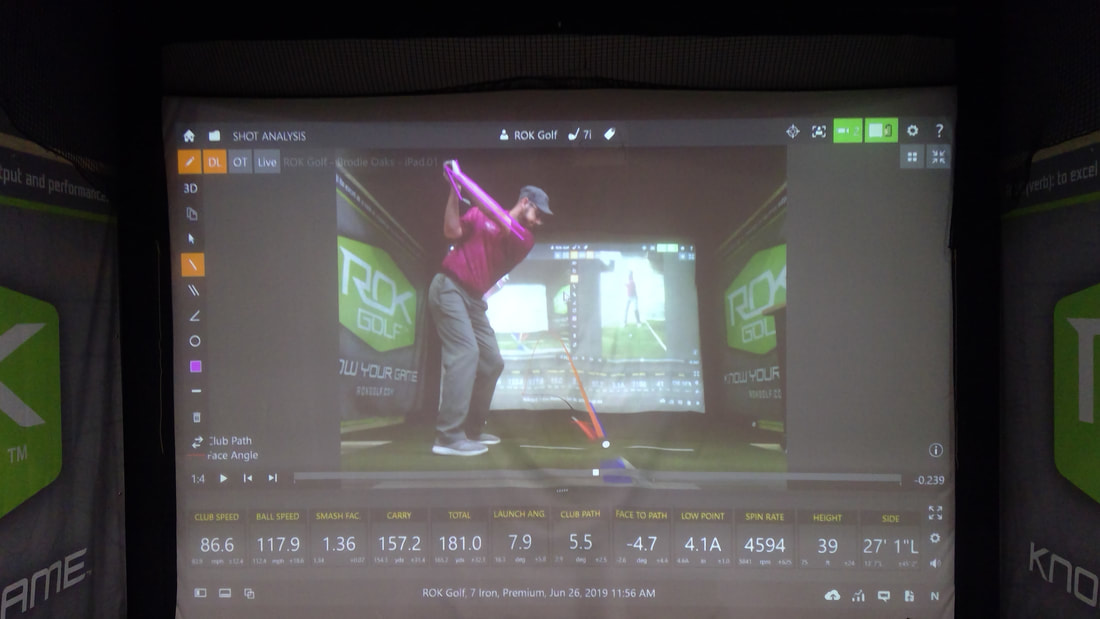

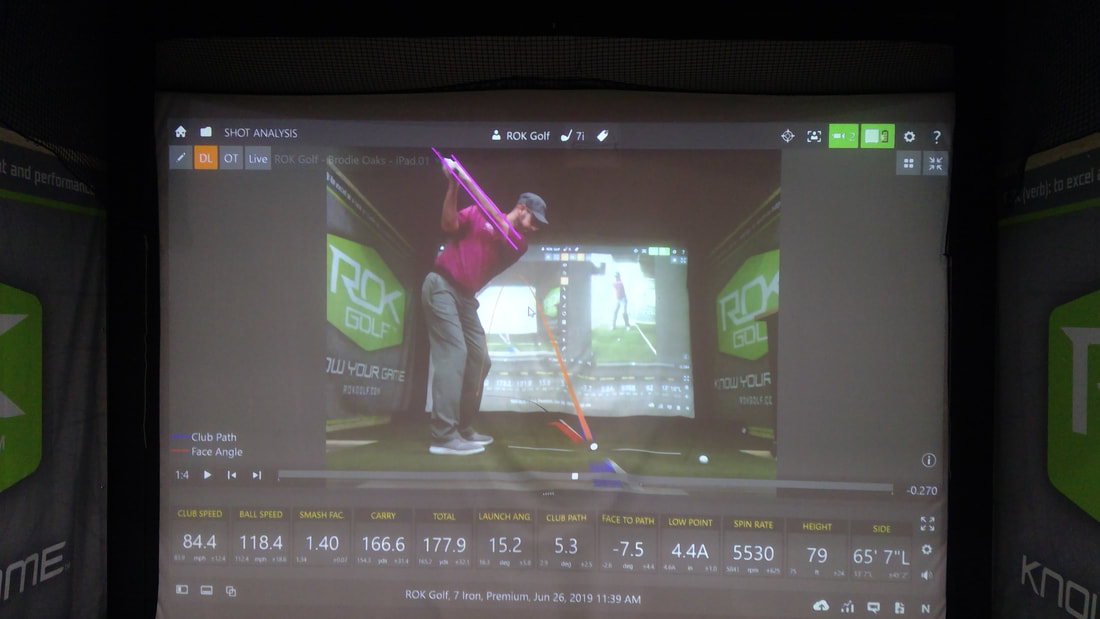

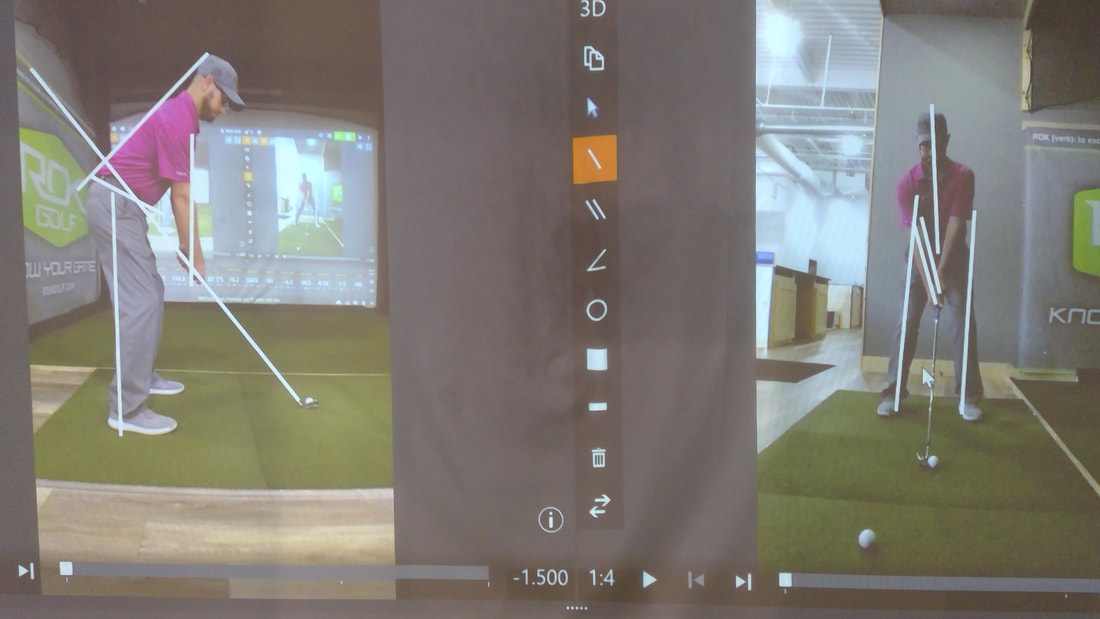


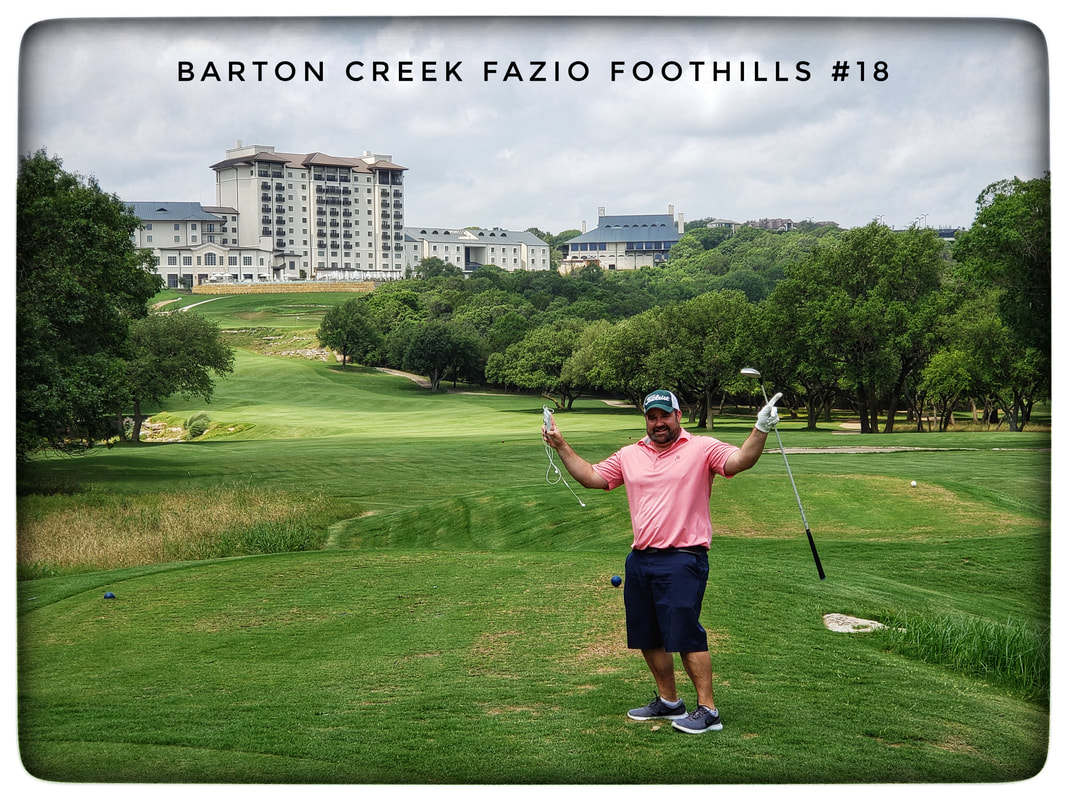
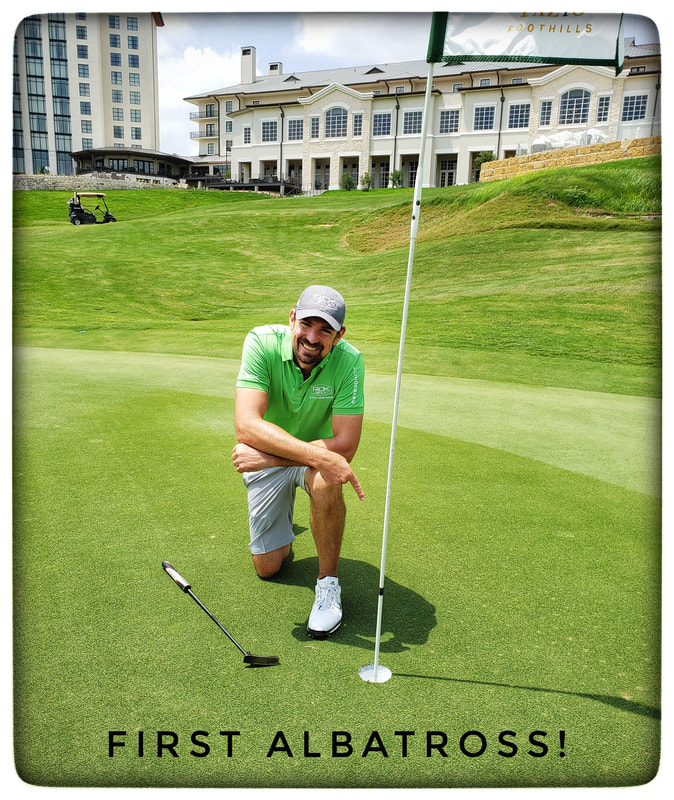

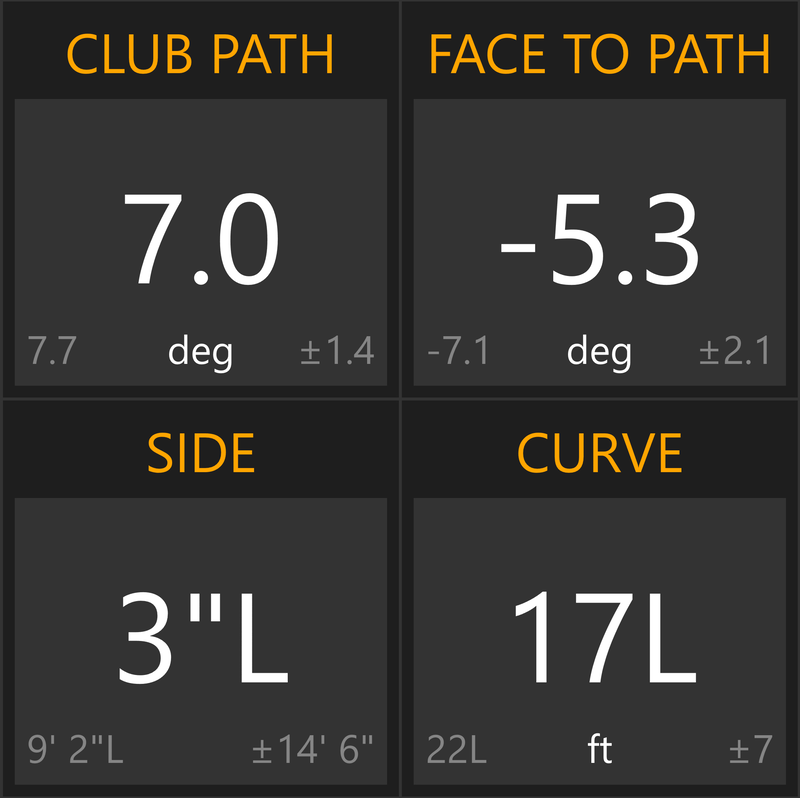

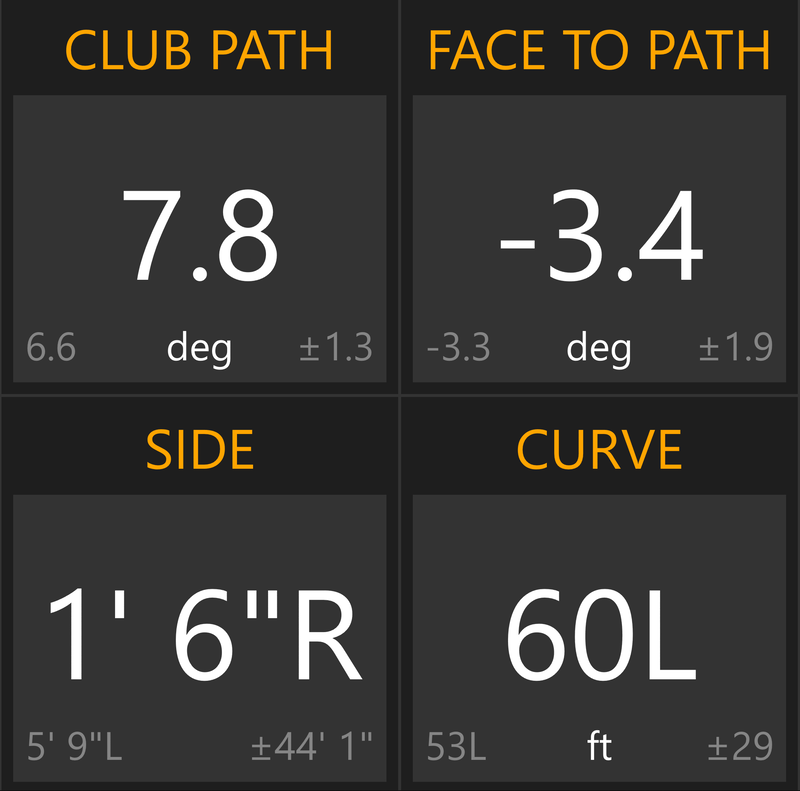

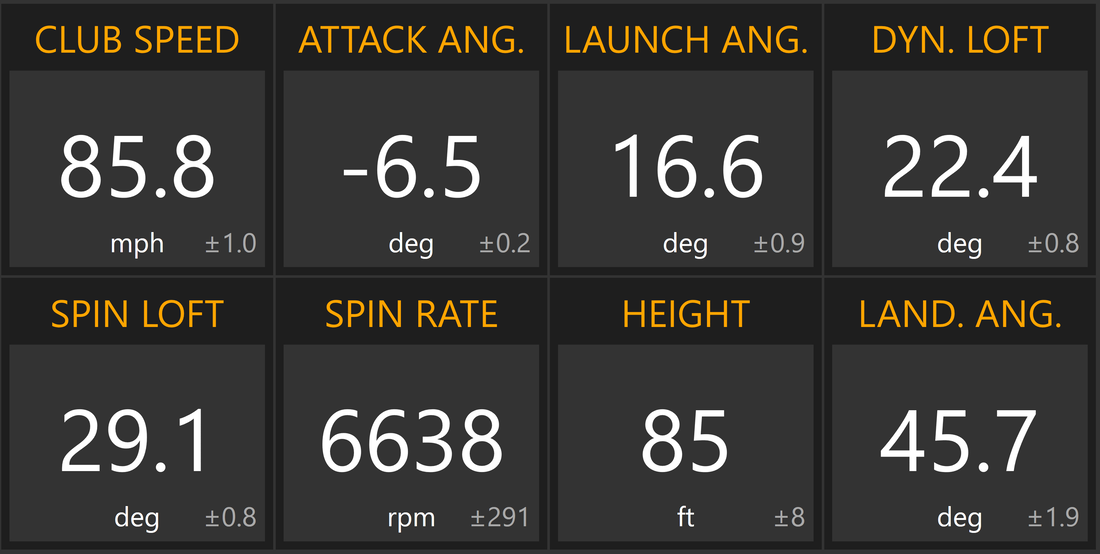

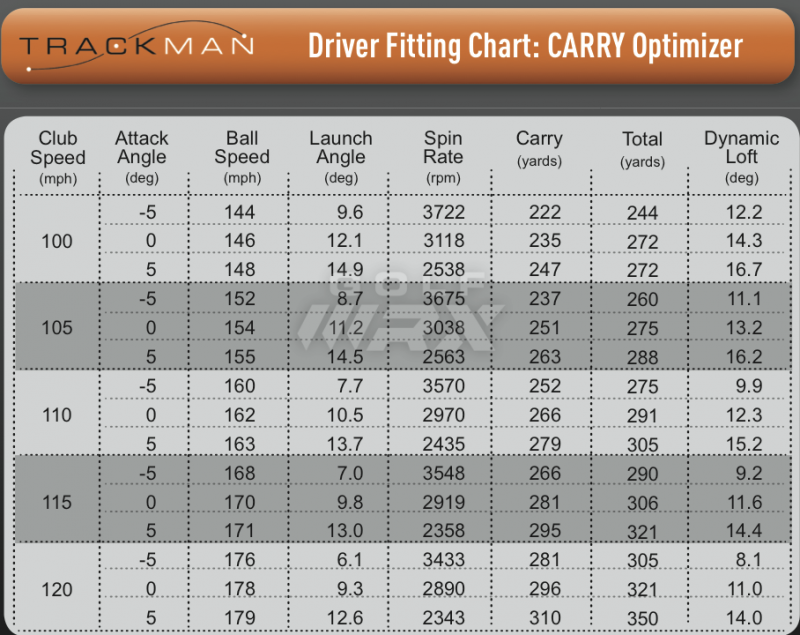
 RSS Feed
RSS Feed